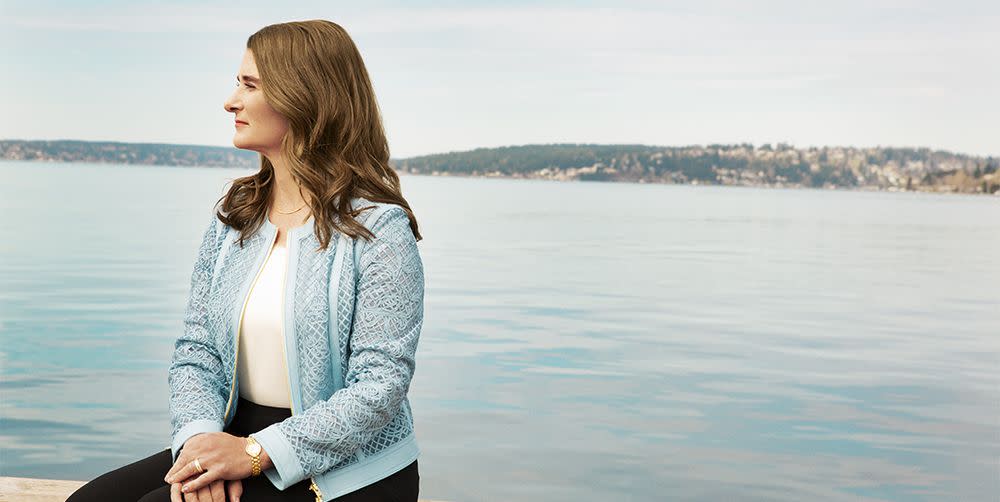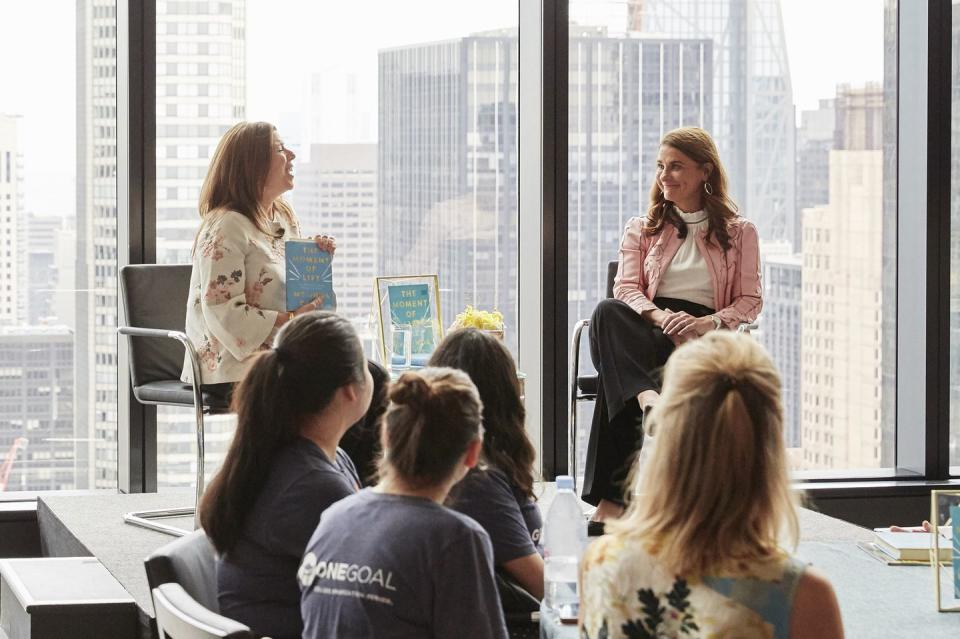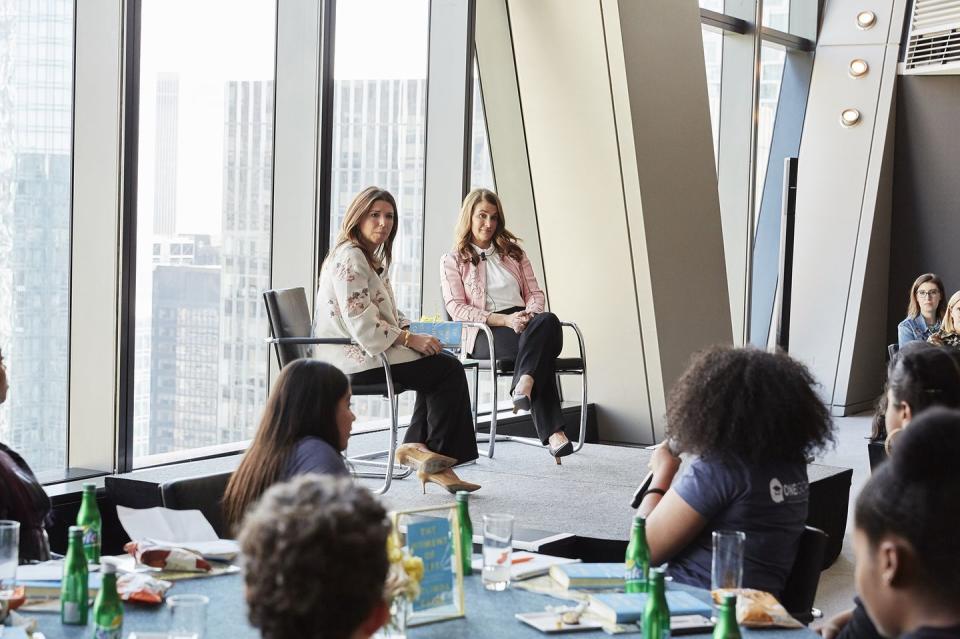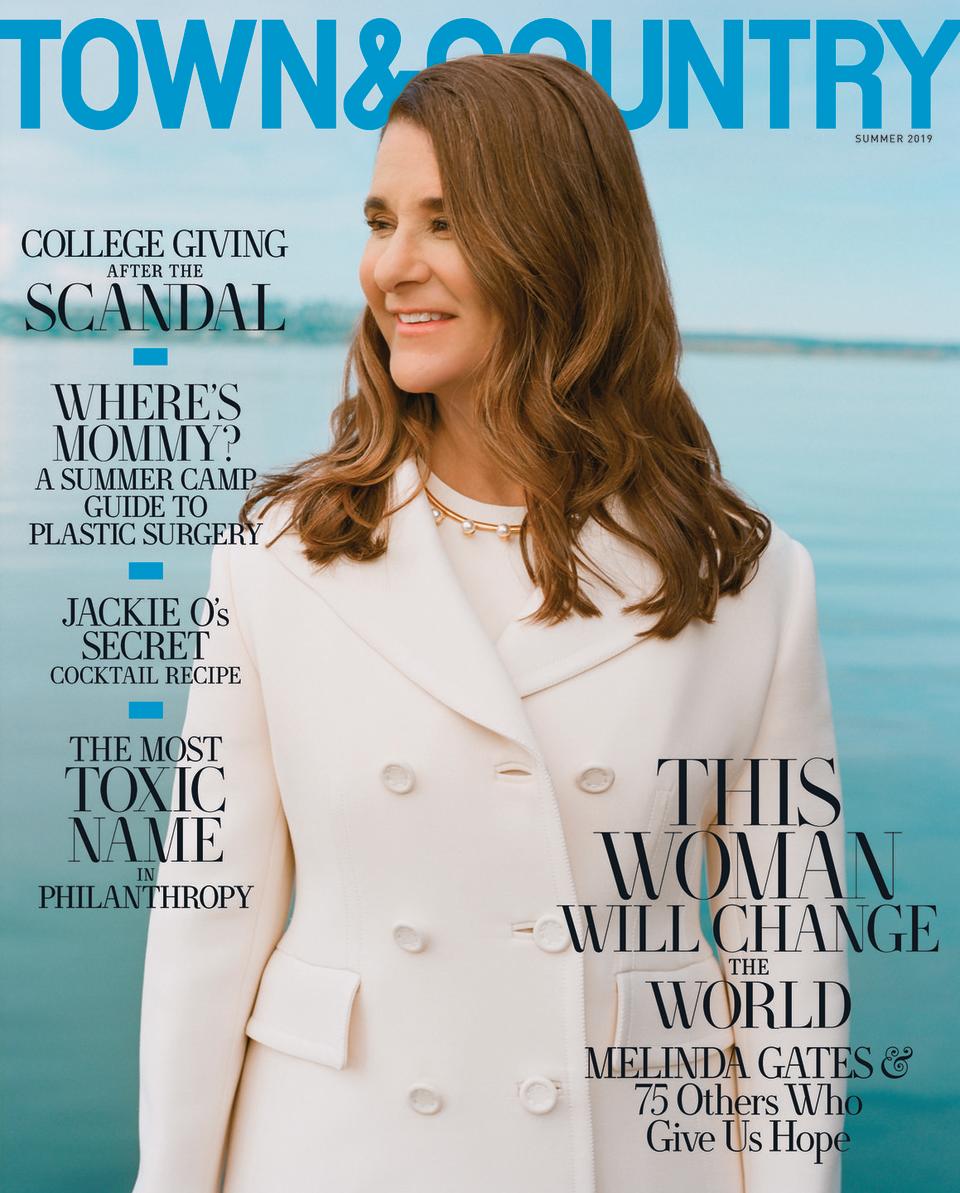Melinda Gates Talks to John Legend About the Power of Failing and the Philanthropic Lessons She Learned From her Kids

In the 19 years since Melinda Gates and her husband, Microsoft co-founder Bill Gates, launched the Bill & Melinda Gates Foundation, their work has helped steer more than $45 billion to causes ranging from maternal health to agricultural development to education, in the United States and more than 130 other countries. In the process the Gateses have become some of the world’s most recognized and powerful philanthropists, setting the standard for thoughtful and impactful giving.
This year Melinda-who, in addition to her philanthropic work, is the founder of the investment and incubation company Pivotal Ventures-became an author; her book The Moment of Lift: How Empowering Women Changes the World was released in April. Here, she talks to John Legend, the entertainer and activist, about giving, her family, and her plans to change the world.
John Legend: I’ve been an admirer of your foundation for a long time and the work that you all do. What made you want to write this book?
Melinda Gates: I’ve been thinking about doing a book for years. I’ve met incredible women in my travels through the foundation, and they have inspired me, so I decided to write the book because I thought their stories could also inspire others. And I felt that this is the right time. I want to make sure this window of opportunity that has been created around the world with #MeToo doesn’t close.
JL: Are there examples that America should follow when it comes to empowering women?
MG: The United States is the only industrialized nation that doesn’t have a paid family medical leave policy. And yet women have gone into the workforce in droves. So when I look at paid family medical leave in almost any country that has put it in place, I know we need to do that-we need to do it soon, and with finesse, at the federal and state levels. I also look at countries like Norway, which has a female prime minister, or I look at Angela Merkel, and I think, Wow, women have really come a long way in those countries. I think it’s time we had equal representation of women in Congress in the United States. And it’s time, at some point, that we have a woman as the leader of the country. But if we stay on this trajectory it’s going to take us 60 years to have equality in Congress-and I don’t want to wait 60 years.

JL: You talk about optimism quite a bit. I consider myself an optimist as well. But you’ve also seen a lot of pain. What makes you optimistic?
MG: I would say I’m a realistic optimist. I see a lot of pain and struggle, and I try to take that in and not shut it away and say, “That didn’t happen.” You have to take in the heartbreak, work through it, and metabolize it-and then use it to create action in the world. I’m an optimist because I can see where the world has been and where it has come to. Childhood deaths have been cut in half since 1990, so the world is getting better. It’s a better time in the world to be a woman than it has ever been-yet it’s not getting better fast enough.
JL: You often point out the ways the world is improving, and I’m always impressed by that. So often, if we watch the news, we can get bogged down in negativity. But there are a lot of stories that show that when people come together and have the will to do something, we can actually get things done.
MG: I think we get caught up in the news because, let’s be honest, the headlines are there to incite fear. We know fear is a strong human response, so we are drawn to those negative stories. But our job is to stand back from it and have a full perspective of the good things and the not-good things going on in society. Ages ago I came across a quote that I just loved, which was, “Never doubt that a small group of thoughtful, committed citizens can change the world. Indeed, it’s the only thing that ever has.” It was a quote by Margaret Mead. And that is ultimately what changes society, a group coming together and saying, “We want something different.”

JL: Let’s talk about the work your foundation has done. How do you think about where you put your resources?
MG: Bill and I start with our values and our beliefs, and our belief is that all lives, no matter where they’re lived, have equal value. And if you start with that belief, then you start to say, “Okay, where is that not true in the world, and what is it that a foundation can do?” And you keep that in mind, and then you start to make investments. Really, philanthropy is very small. Sometimes people look at our foundation and say, “My gosh, the resources are so large,” but not in comparison to the issues we’re trying to tackle.
JL: What are some of the issues you’ve been focusing on?
MG: The research dollars that we spend in the United States are primarily focused on the education system, because we feel that if kids can get a great education, they can go on to live out their talents in the world. We’ve been really focused on how to get a great teacher in front of the classroom for every single kid, and how to make sure you’re dealing with their social and emotional issues and what might be going on in their communities.
JL: Let’s talk about the health sector and what you’re doing in developing countries.
MG: Outside the U.S. our primary area of focus is global health. We do that because Bill and I both see that if you can’t grow up with decent health, you can’t go on to get a great education. We focus quite a bit on childhood vaccines; we’re very focused on getting the right vaccines out with the right strains for different countries in Africa. When we got into this work, there was a 25-year lag between when a vaccine came out in the United States or Europe and when it got out in, say, Kenya or Tanzania. We’ve brought the lag down to less than 18 months.
JL: You’ve seen how vaccines have worked around the world. How does it make you feel when you see the anti-vax movement in the U.S.?
MG: It makes me sad for the child in the United States whose parents aren’t getting him or her a vaccine, because they are exposing their child to a potentially lethal disease like measles. It also makes me frustrated as a global health advocate. I meet with mothers in the developing world, who walk 15 kilometers in the heat with a child at their side and a baby on their back or in their belly, because they know the difference a vaccine makes. Yet we have educated men and women in the United States who don’t believe in vaccines. I just want to say sometimes, “Are you kidding me?”
JL: There are some people in the world with the view that there’s too much concentration of wealth in the hands of too few. What do you think about when you see the gap between the haves and the have-nots in the U.S.?
MG: It shouldn’t be. I think we need a society where equality is more equal, and wealth is more equal. Bill and I have been very outspoken that we think we need a more progressive tax system that taxes the wealthy more than middle-class people, and middle-class people more than low-income people. We should not have this kind of inequality in one of the world’s wealthiest countries.
JL: How many kids do you guys have?
MG: We have three: daughter, son, daughter. They’re 22, 19, and 16. How old are yours?
JL: Mine are so young. My daughter will be three in a couple of weeks, and my son will be one in May. We think a lot about how to raise them-even though they’re surrounded by privilege-to be grounded, responsible, and kind. How do you instill those values in your kids?
MG: You start really young. You have to do it in very light ways when they’re young…like, when you’re driving down the street, point out things that are different when you go through different neighborhoods. Get the kids questioning why somebody would be homeless in a city like ours when we have a nice house. And then take them out in the community, take them out in neighborhoods that don’t look like where they’re growing up, and have them be in connection with people in those neighborhoods.
I remember taking both of our older kids, when they were young, out in Seattle. It was Christmastime, and their school was hosting this event to make boxes for the homeless, so that when they come into a shelter they get a box of toiletries. We were helping: We folded the boxes, and we put a piece of soap in there, we put a razor in and a washcloth, and I was feeling good about it. Then, as we were walking out of the community center where we made these boxes, I’m holding my two kids’ hands, and I said, “Isn’t that great-we made these boxes for the homeless.” And one of my kids said, “But Mommy, don’t they need homes?”

JL: Do you feel there are areas where you made mistakes that you regret now or that have helped inform how you’ve gone forward?
MG: We are absolutely a learning foundation, and I hope we always will be. When you’re pushing the frontiers of an area or you’re pushing science, you have to be willing to fail and keep learning from each of those failures. Learn that we don’t always know the right tactics when we start, and that you have to listen a lot and be able to try some things and realize they’re not all going to work. Then you back up and try other things.
JL: How involved do you get in politics? There are lines around what can be philanthropy and what can be advocacy. What’s your strategy?
MG: Bill and I personally aren’t big political donors. We don’t believe in that. What we are and what we do at the foundation is advocate. So we absolutely go into governments, and the biggest thing we advocate for is foreign aid dollars, because we know that when those are spent well, you build infrastructure in countries, and the health starts to improve for people. Then they can start to get a good education and start to participate in their own economy. And when you get that wheel working, of health, education, economy, then countries start to grow from low income to middle income to high income.
JL: How do you make sure you integrate the opinions and leadership from these developing countries in the decision-making?
MG: That’s incredibly important in philanthropy. You have to take the cultural context into account. We try to work with partners who have been on the ground in these countries, who have built the trust of the community already and will help us hear the voices of the community. I learned this from Jimmy Carter when he came and visited our foundation. I said, “President Carter, what is it that you’ve learned in global health that we should know now so we don’t have to make the mistake?” And he said, “Melinda, anything you do has to be owned by the local people. And when it’s owned by them, and their voices are heard and they truly believe in it, then they will truly take it up. And when you leave, the program will still exist.” And he was absolutely right.
JL: Speaking of Jimmy Carter, do you have any other philanthropic role models?
MG: We were incredibly lucky to meet Nelson Mandela several times. I think he continues to be this shining example of forgiveness, of how you take something horrific-like what happened in South Africa-and figure out how to help your country forgive and move forward. That’s an unbelievable form of leadership. I often think about how much he had to keep goodness in his heart, despite all those horrible things happening around him. You have to keep touching those places of goodness to know how to act in the world.
Photos by Heather Hazzan; Styled By Alison Edmond

This story appears in the Summer 2019 issue of Town & Country. Subscribe Now
('You Might Also Like',)

